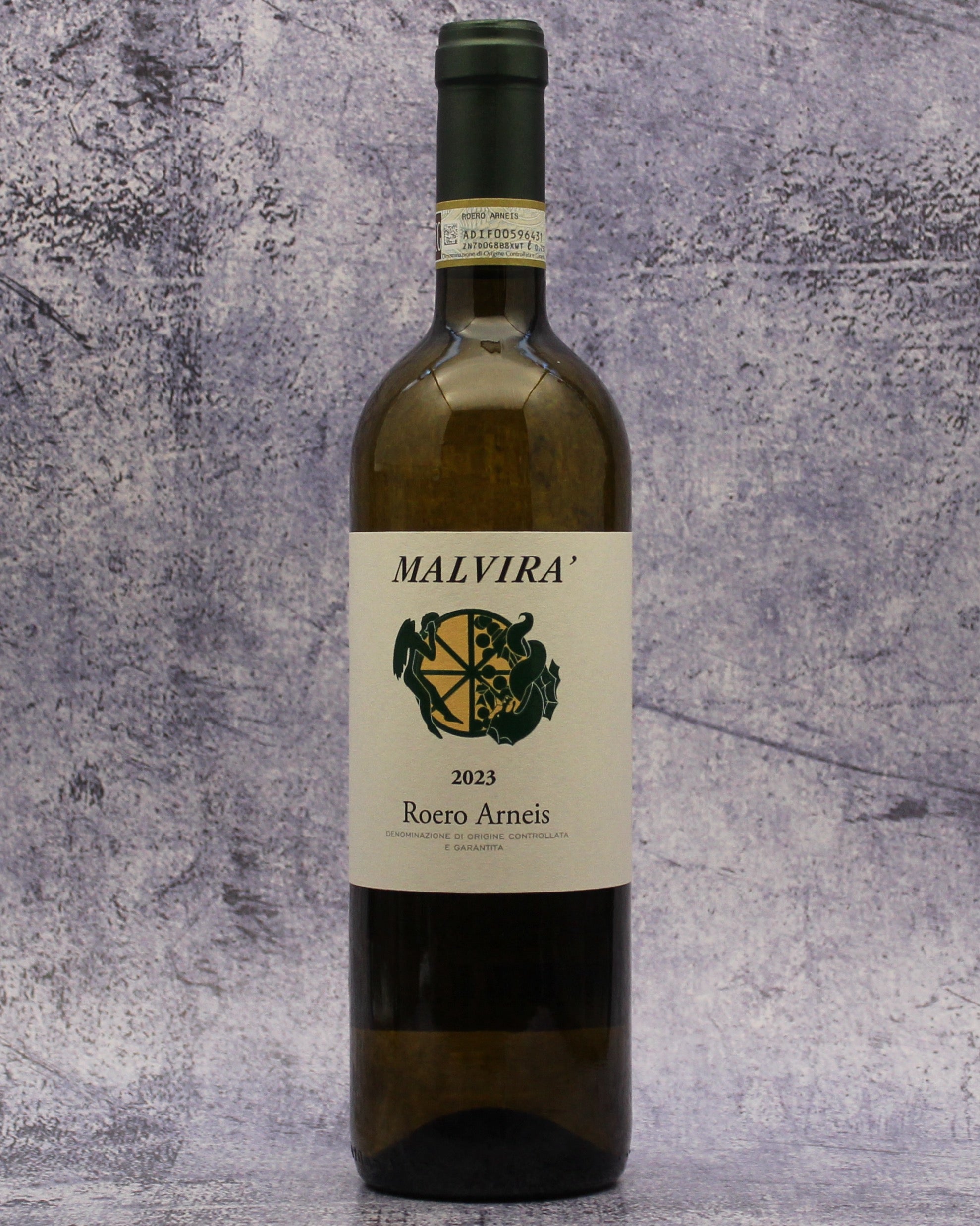Description
From: Roero, Piedmont [Piemonte], Italy
Varietal: 100% Arneis
Taste & Critical Acclaim: Lifted and fresh on the nose with notes of white blossoms, citrus, tree and stone fruits, chamomile, and a hint of minty pineapple. The wine gives way to more pronounced white stone fruits and hints of melon on the palate before finishing with zesty citrus and a saline minerality.
WE 91 Points Wine Enthusiast
Made with organically grown grapes, this has delicate, enticing aromas reminiscent of ripe white stone fruit, crushed mint, pineapple and freshly made bread dough. On the linear, savory palate, notes of bitter almond and ginger accent a core of Bartlett pear and lemon drop before a tangy mineral close. Best Buys.
Pairing: This wine is a bit of a chameleon on the table, able to handle both lighter fare
like lean white fish and heavier white meat dishes easily. Salad? Yup. Roast chicken?
You bet. The traditional Piedmonte dish Agnolotti dal plin (pasta pillows of pork,
chicken, rabbit)? Of course. Other delicious pairings include fried calamari or prawns, mild curries, garlicky seafood spaghetti, seared scallops or pan-roasted white fish and herbed butter, carbonara, creamy chickpea pasta with rosemary (check out the recipe below), and crudité.
Creamy Chickpea Pasta With Spinach and Rosemary
By Alexa Weibel
About. Giuseppe Damonte established Malvirà in 1950 when the Roero’s potential was
unrealized. Giuseppe had a great passion for farming and wine, which he
passed on to his two sons, Roberto and Massimo. In 1974, Roberto and Massimo took the reins and slowly turned the family’s bulk wine business into an estate
focusing on quality wine production. Over the next 30+ years, the brothers
Damonte worked tirelessly to improve the quality of wines at Malvirà. Today, their entire production comes from six vineyards over about 40 HA, all organically farmed.
Few are as dedicated to Arneis as the Damonte brothers. Almost half of their production
is the indigenous white grape, and in 1983, they purchased the famed Renesio cru. It was from this vineyard that Arneis is said to have first been identified in 1478. Despite its long history in Piedmont, Arneis almost went extinct in the early 1990s when fewer than. 60 HA remained. As true believers, the Damontes have some of the oldest vines,
with averages around 50 years. Like Chardonnay and Riesling, Arneis
provides a great-looking glass into its particular terroir. When planted in stony
calcareous soils, the wines are steely and mineral – like great Chablis. In clay soils, a
rich wine laced with warm tropical fruit is produced.
Their entry-level Arneis comes from a blend of vineyards, notably Renesio and the Trinità cru. Like all of the Roero, Trinità was once an ocean floor. Its soils contain high proportions of sand and clay, along with many fossilized shells. The wine is aged exclusively in stainless steel and is marked by its freshness. Don’t miss Malvirà’s fantastic Nebbiolo. Most of the grapes come from the top of the Trinità vineyard, where there is much more clay in the soil. The Nebbiolo is hand-harvested in early October and aged 18 months in 450-liter French barrels.
Even to this day, the Roero folklore lives on about witchcraft lurking behind its dramatic
contours and obscure woods—but these stories only add to the region’s allure and
charm. Today Roero winemakers are some of the most astute and motivated in
Piedmont. While the white Arneis has attracted global attention for some time, now
Roero Nebbiolo wines (elevated to the same DOCG status as Barolo and Barbaresco) are
making a name for themselves. Keep an eye on any labeled with the vineyard,
Valmaggiore, as Barolo producers have been investing here for years. Arneis is the star white grape of Piedmont, yielding a dry and subtly scented wine.
More on the grape varietal!
Roero Arneis is Italy’s overlooked great white wine
By W. Blake Gray

